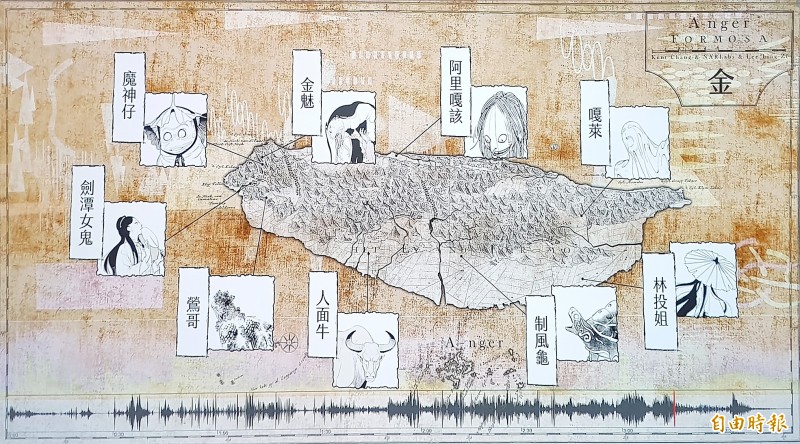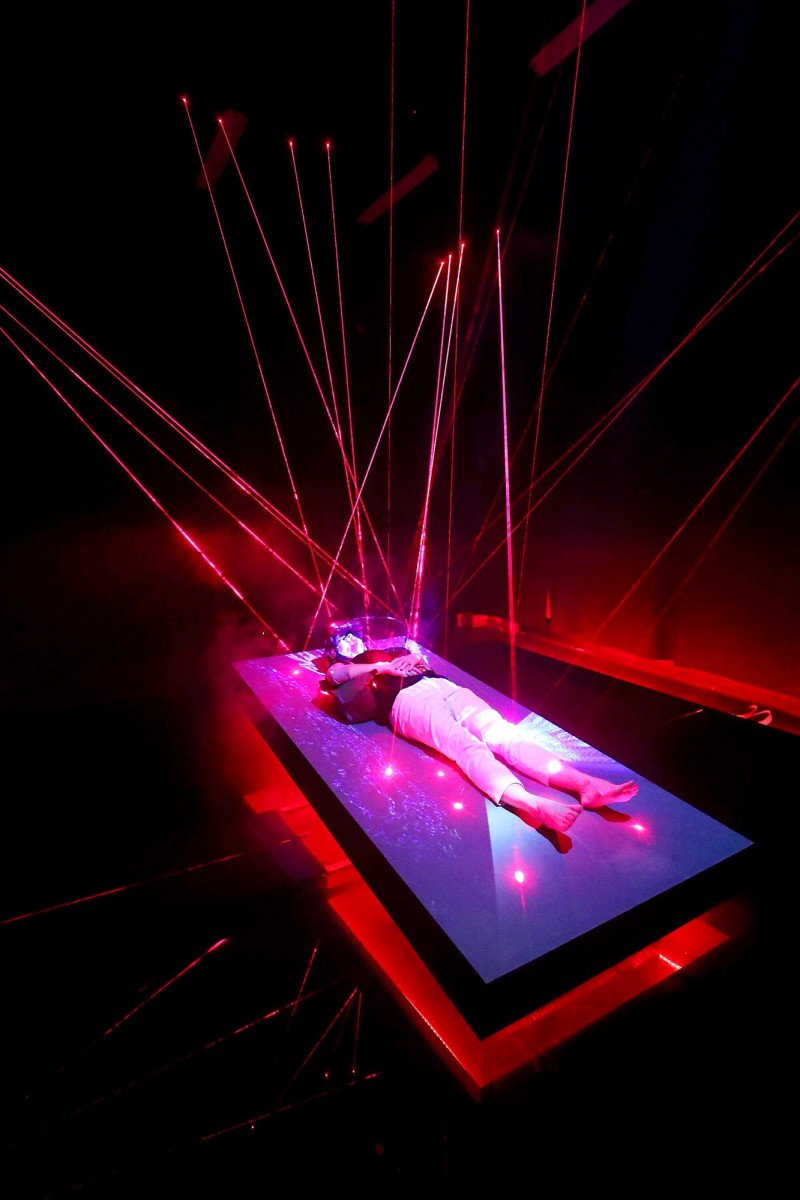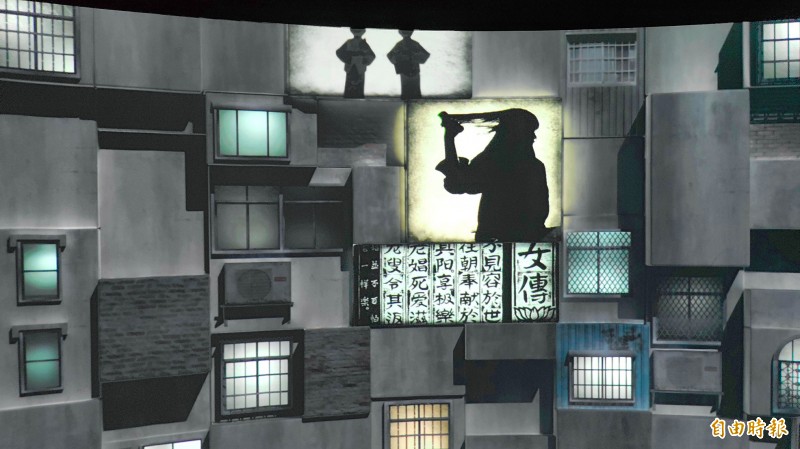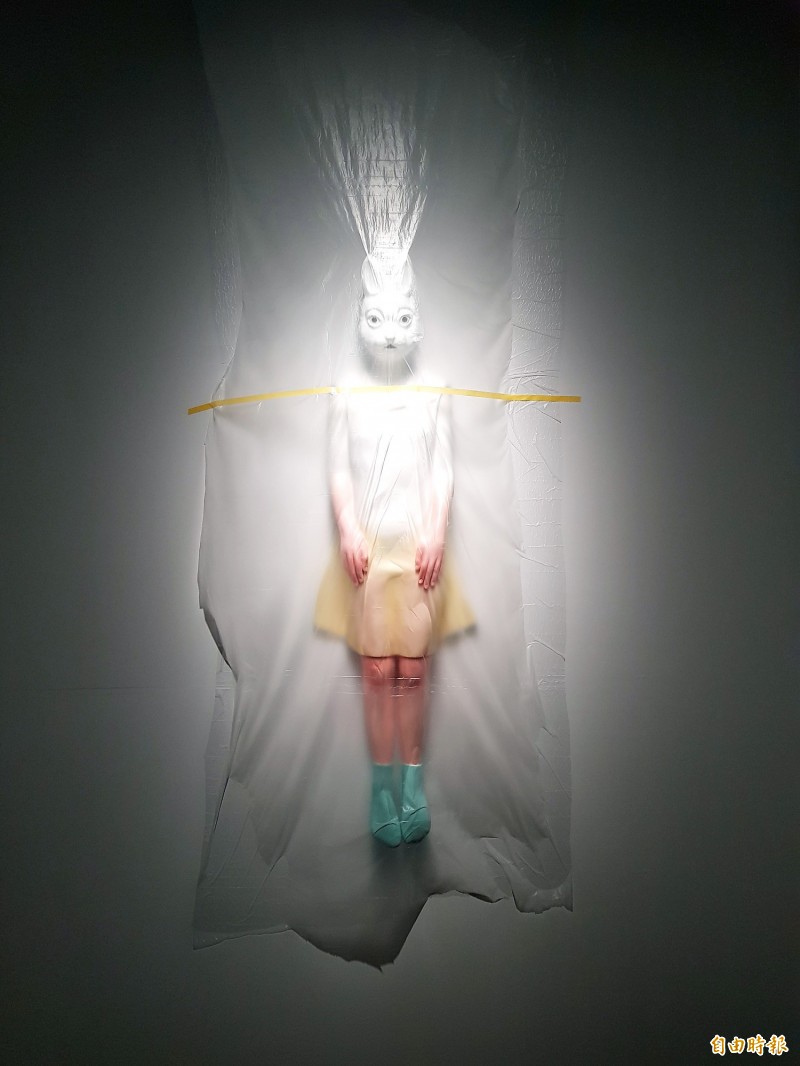《TAIPEI TIMES》Modernizing ghosts and ghouls
Yao-Chi City is a must-see exhibition that presents Taiwan’s paranormal folk legends under the context of cutting-edge contemporary art
By Han Cheung / Staff reporter
Can Taiwan’s paranormal legends become a pop culture trend? Or will classic tales such as Aunt Tiger (虎姑婆) give way to similar Western stories such as Little Red Riding Hood?
Author Ho Ching-yao (何敬堯) ponders this question in the introduction to his 2017 book Yaoguai Taiwan (妖怪台灣), a compendium of over 200 traditional and modern supernatural beings, creatures and events.
Judging from the meticulously curated exhibition, “Yao-Chi City: Taiwanese Paranormal Literature and Contemporary Art” (妖氣都市: 鬼怪文學與當代藝術特展), which includes several illustrations from Ho’s book by Chang Ki-ya (張季亞), the answer is yes.
Opening on Saturday last week at the Taiwan Contemporary Culture Lab (C-Lab), the multifaceted show focuses on the modern interpretations and applications of these legends and creatures, from sculptures, soundscapes and illustrations to motion comics, digital pop-up books and virtual reality (VR). The exhibition runs through Sept. 15 and will feature talks, performances and movie screenings over the next two months.
“We hope to help restore the paranormal to its former position of importance in Taiwanese culture,” write the curators.
Suppressed by the Japanese and Chinese Nationalist Party (KMT) rulers for decades and further suffering from the onslaught of Western and Japanese pop culture, Taiwanese paranormal legends seem to be in vogue again. This is most evident from The Tag-Along (紅衣小女孩), a well-received movie franchise that featured Moxina (魔神仔), a mountain demon known to kidnap people. The series’ third film, released last year, explored the urban legend of the human-faced fish, which dates back to the early 1990s.
Yao-Chi City comes hot on the heels of the National Museum of Taiwan Literature’s Enchanted Taiwan — Ghouls and Goblins (魔幻鯤島—妖鬼奇譚) exhibition, which ended in February and focused on the nation’s literary ghouls and demons and their modern-day representations. This time, the museum takes the theme further by collaborating with C-Lab to put together a cutting-edge art show that will surely attract a wider range of visitors.
CUTTING EDGE
As expected from the National Museum of Taiwan Literature, the exhibition is fully bilingual with impeccable English translations of the Chinese original. Context is important in something as culturally-specific as folk legends, and overall the descriptions explain the traditional inspiration and modern interpretations well. Some of the smaller text is hard to read due to the dim lighting, but otherwise it’s a well-thought out and executed journey that is easily navigable.
While literature remains the basis of the exhibition, that aspect is downplayed as the visuals and audio take center stage. Upon entering, the viewer is greeted by two eerie sculptures. A harrowing soundtrack inspired by Aboriginal shamans and tree spirits, and utilizing mostly natural sounds by Lee Ling-zi (李凌子), sets the tone. Small tear-off pads containing excerpts (in Chinese) from four featured novelists can be found throughout the exhibition, and there are also signs with author introductions as well as book samples — but that’s not what makes this exhibition so fascinating.
It’s the myriad ways that these creators incorporate the legends in their work that speaks to Ho’s original question about whether Taiwanese folklore can become a vital part of popular culture. Only about 30 percent of the pieces were commissioned, while the rest are drawn from existing projects. Yao-Chi City is an exemplary demonstration in how to keep traditions from fading — not by clinging to the past but by presenting them in a form that’s immediately relatable and of interest, especially to young people.
The different styles in which the artists work show that there’s not one way to represent tradition. Hou Chun-ming (侯俊明), for example, presents a series of large-scale woodblock prints that resemble ancient Chinese descriptions of deities, but are updated to confront contemporary sexual taboos. On the other end of the spectrum is Akru’s (real name Shen Ying-chieh, 沈穎傑) detailed manga-style depictions of stories by Japanese-era novelist Huang Feng-tzu (黃鳳姿).
Unfortunately, due to staffing issues, one of the two VR experiences were available — and there was a line because only two people can view the piece at a time. But Your Spiritual Temple Sucks by Serendipity Films (綺影映畫) was worth the wait. Combining 8-bit gaming graphics, real footage and panoramic VR 3D technology, it’s a humorous take on the guanluoyin (觀落陰, visiting the netherworld) ritual, where the protagonist tries to change his fate.
There’s not much to complain about this exhibition as it’s evident that Taiwan has come a long way in this area, even in the past few years. The Creative Expo in April was another stellar display of local culture that stressed interactivity and multisensory experiences. The static posters and drab displays with horrific English have no place in today’s curating world, and Yao-Chi City definitely sets a new bar for excellence.
新聞來源:TAIPEI TIMES





















